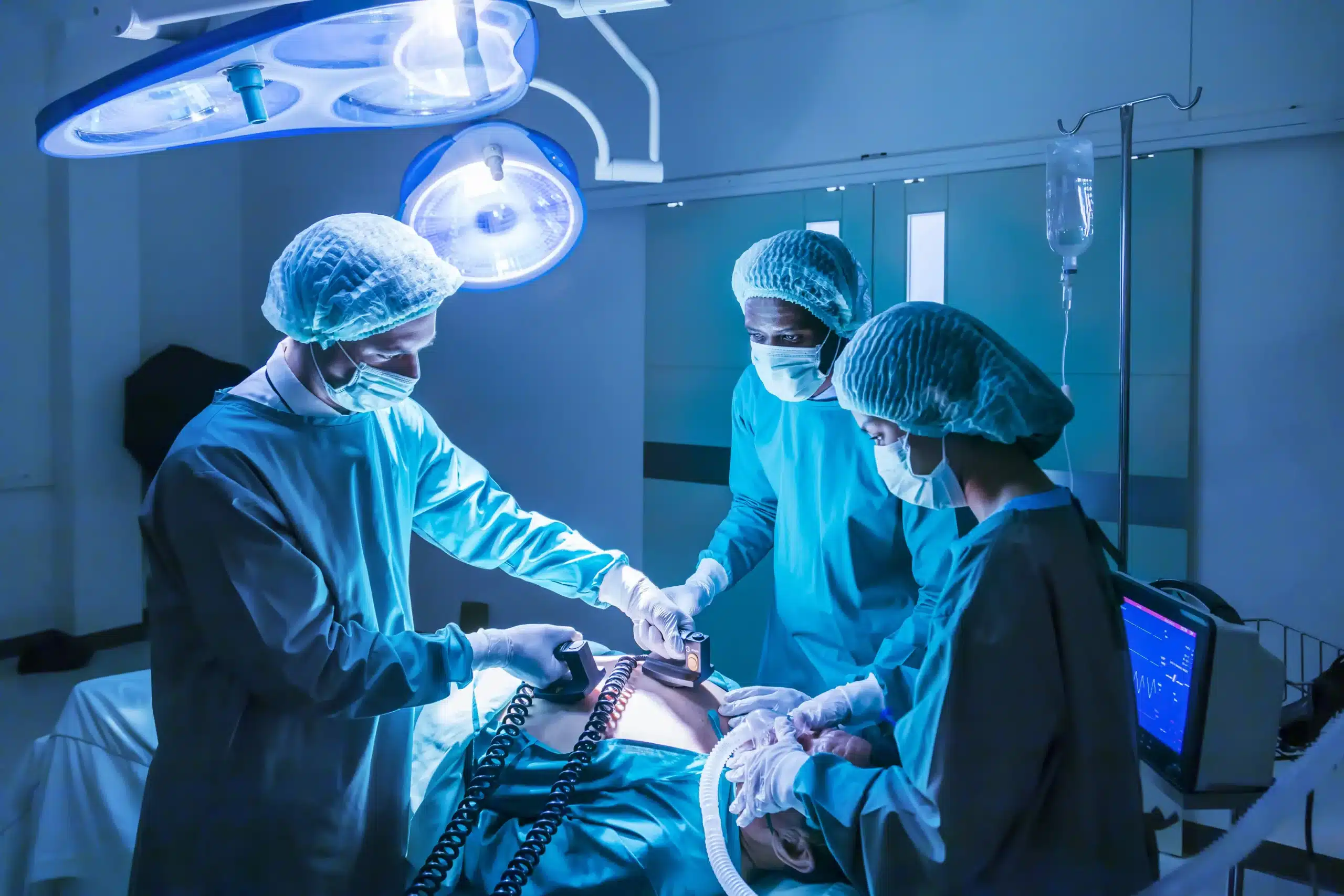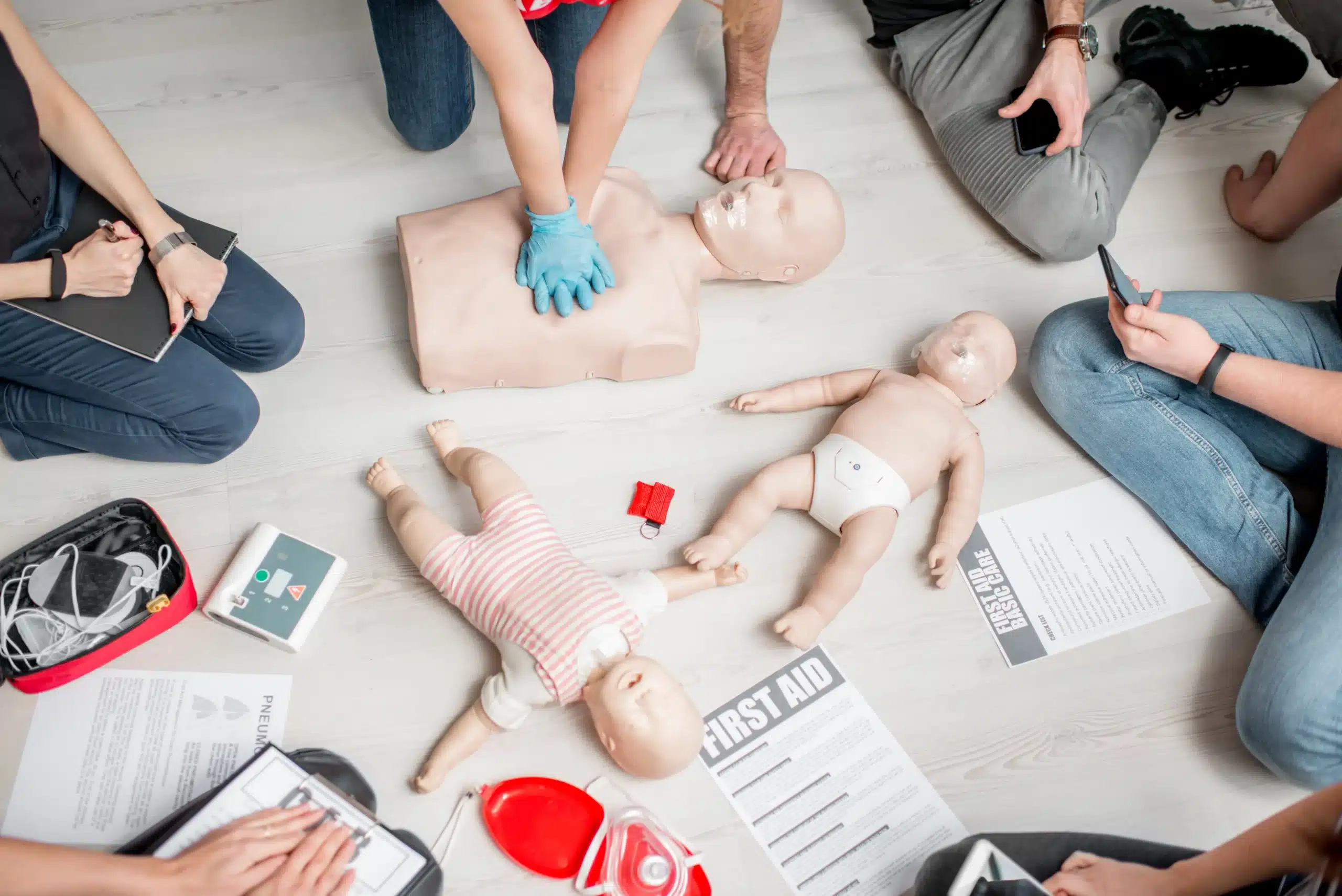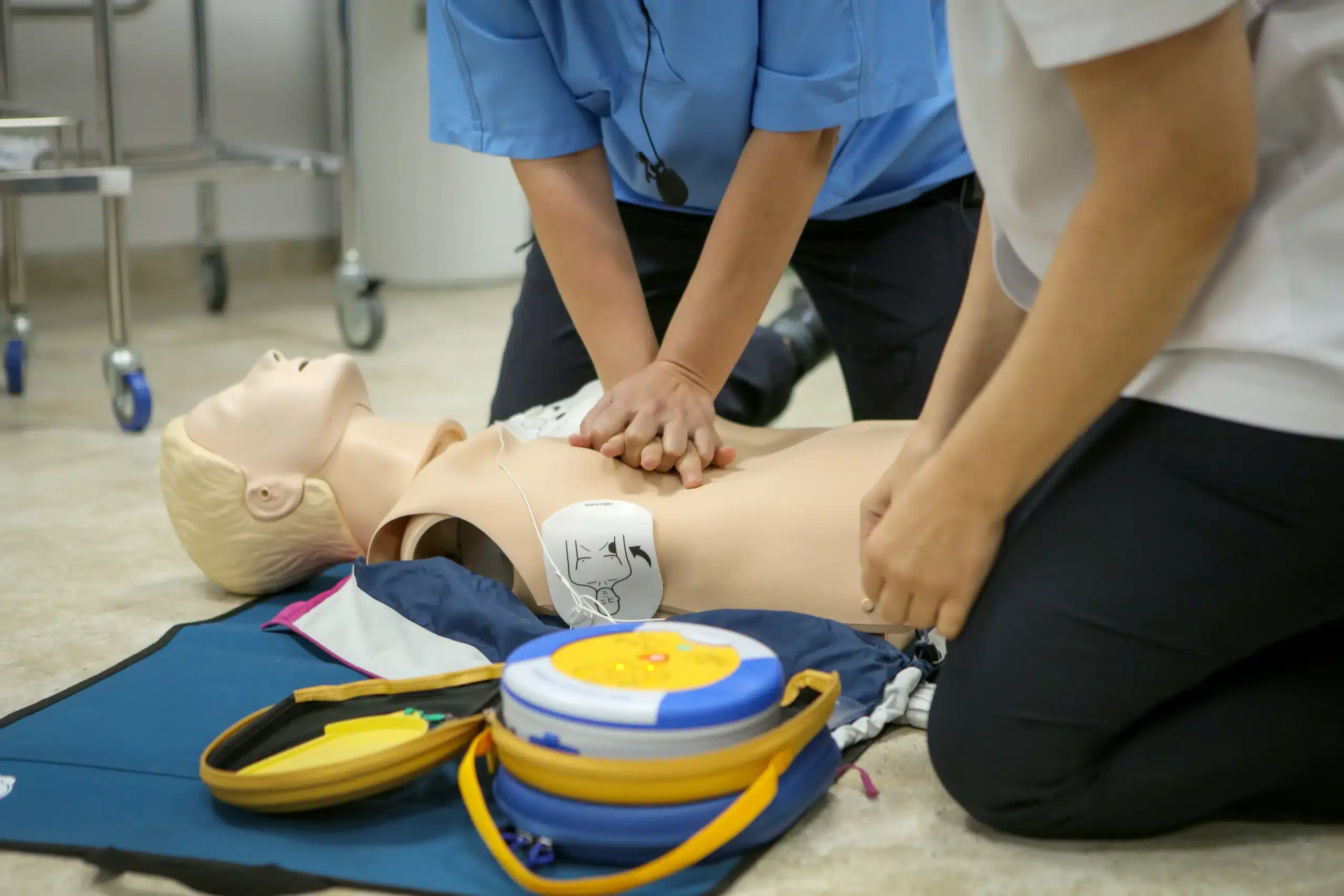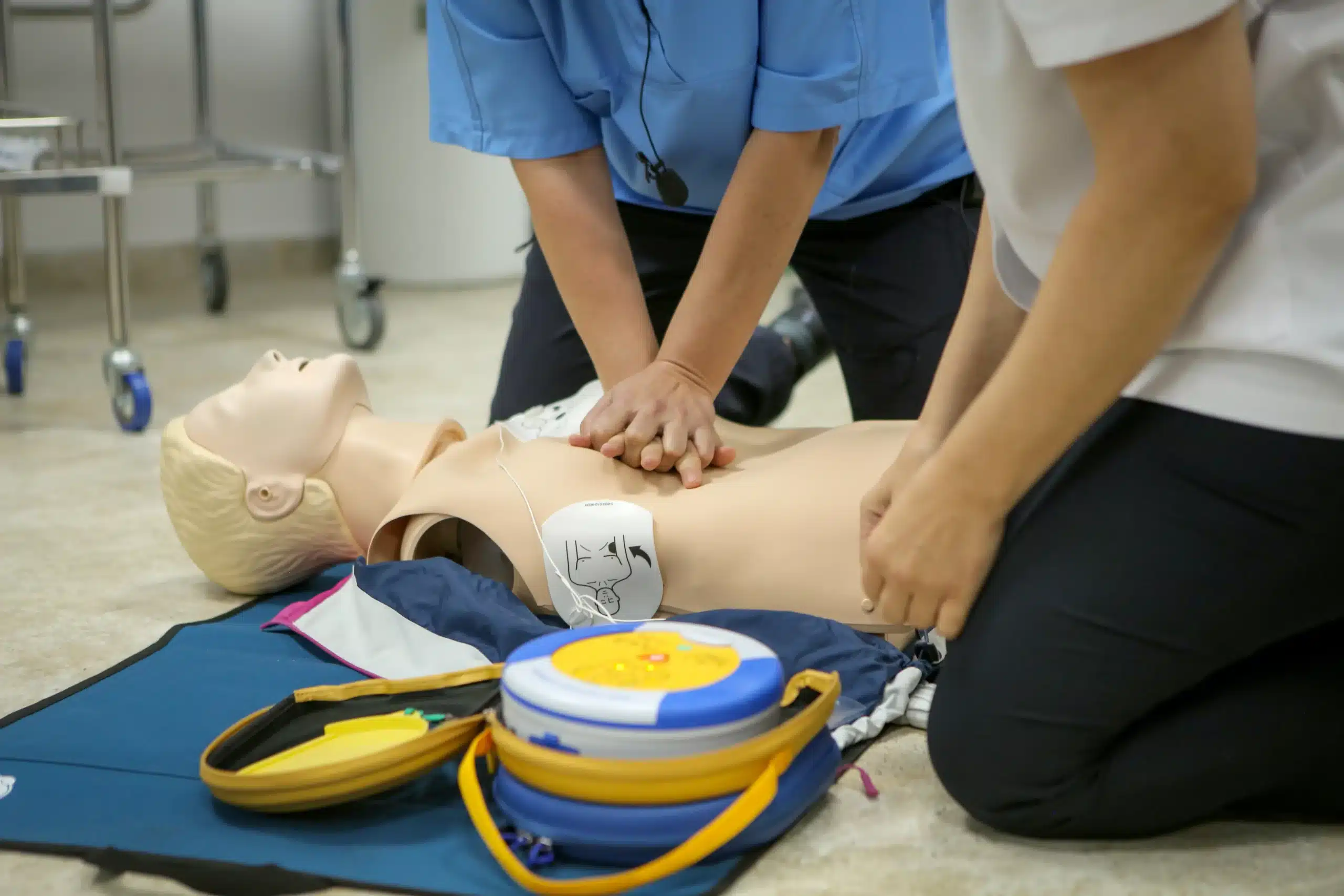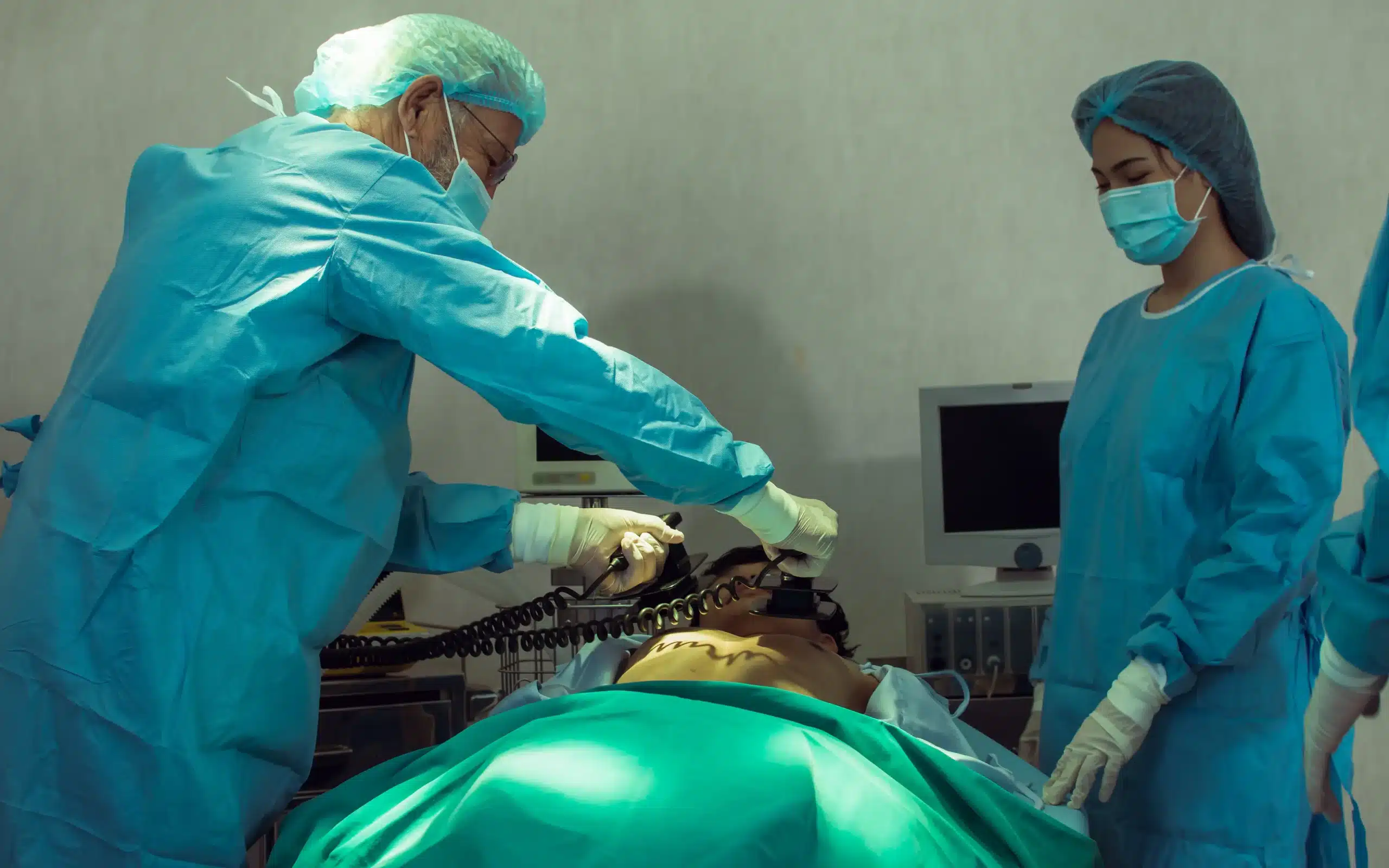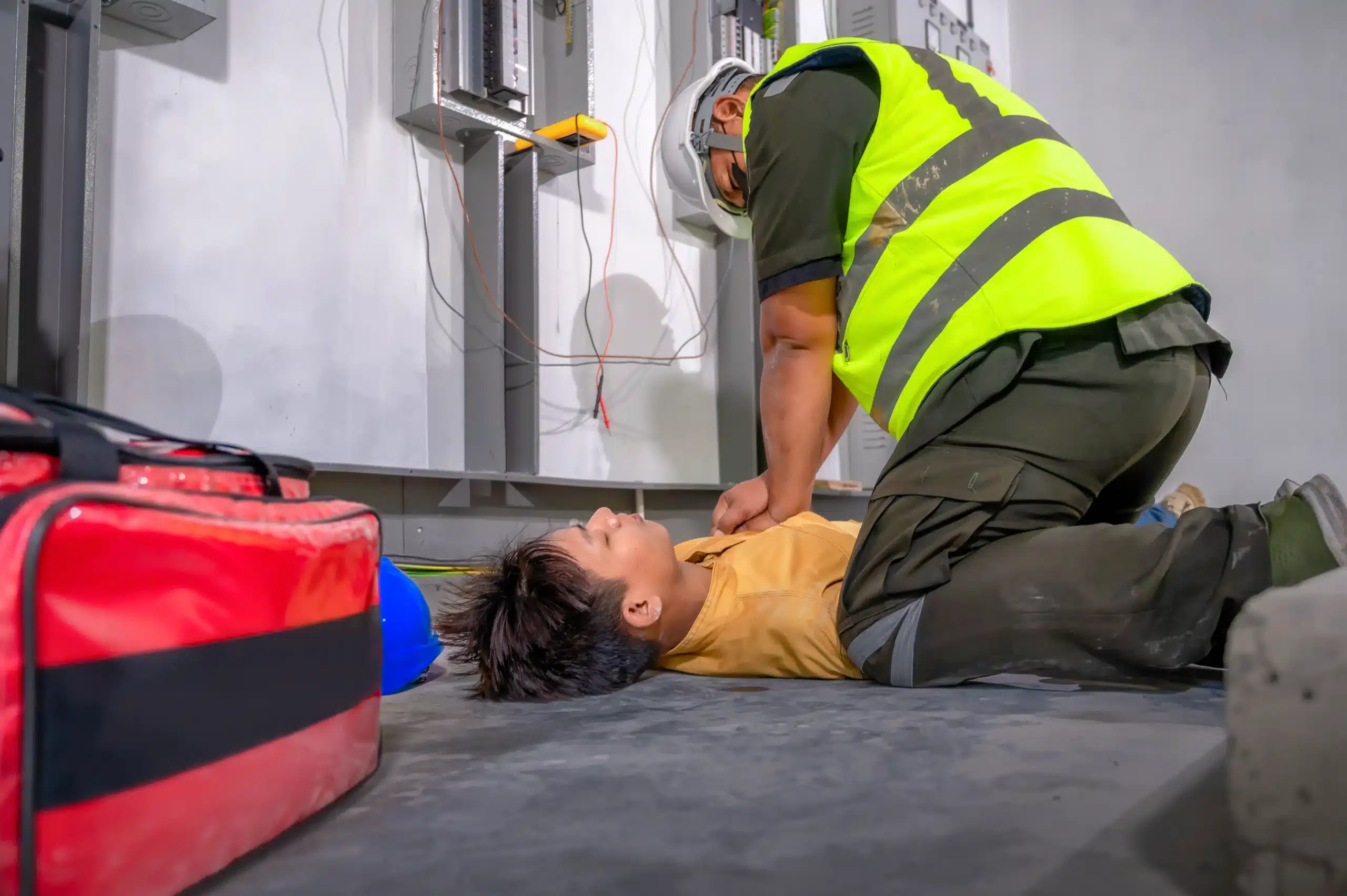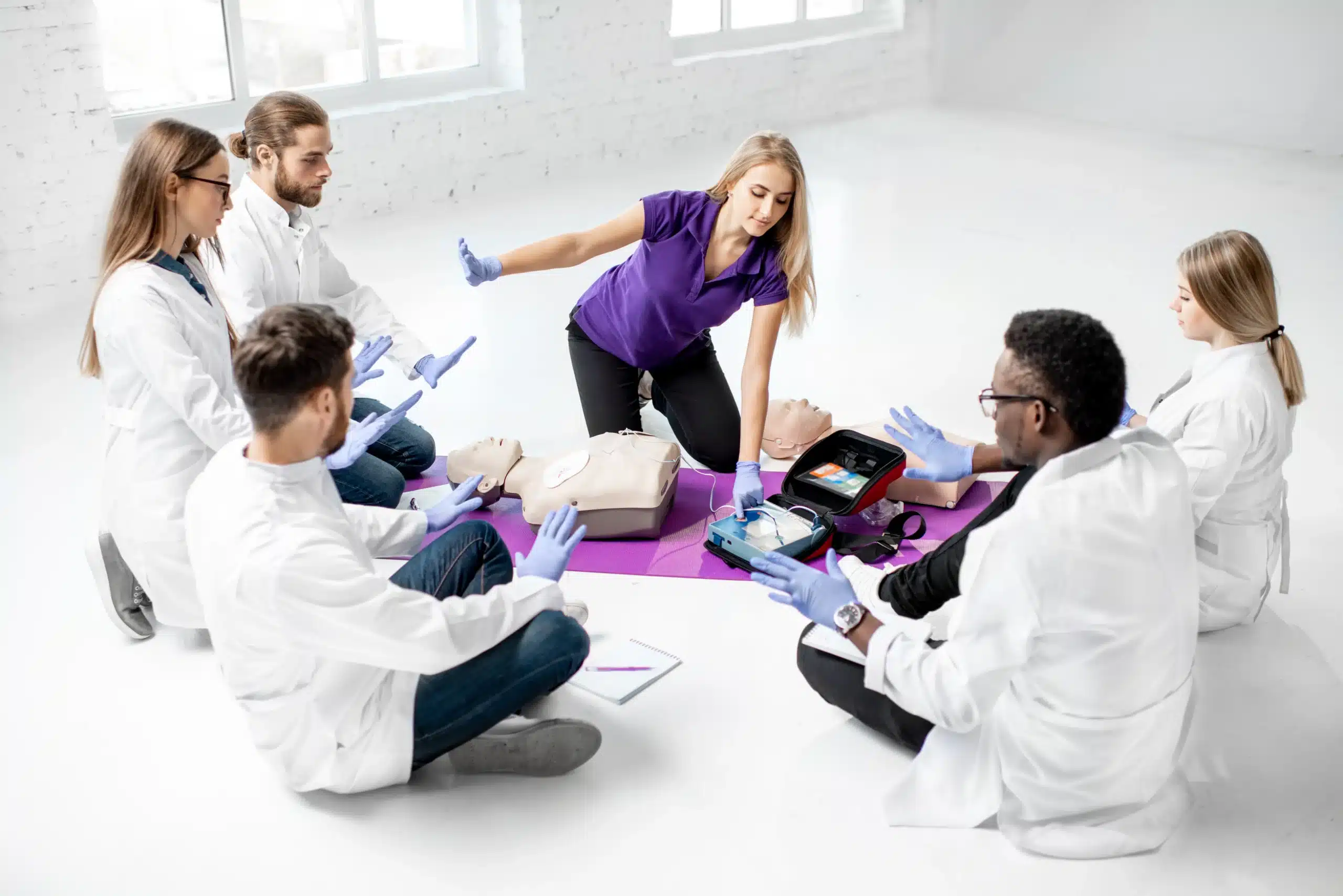Living in a coastal city like Monterey offers incredible opportunities for outdoor adventures, but it also comes with unique risks. Whether you’re hiking in Garland Ranch Regional Park, kayaking in Monterey Bay, or simply enjoying a picnic at the beach, accidents can happen. Being prepared is key, and that’s where knowing CPR and first-aid in Monterey becomes invaluable. This guide will provide you with a comprehensive understanding of CPR and first-aid, highlighting their importance in emergency situations. We’ll delve into the specific types of emergencies you might encounter in Monterey and equip you with the knowledge and resources to respond effectively. From basic wound care to life-saving CPR techniques, we’ll cover everything you need to know to stay safe and be prepared.
Key Takeaways
- CPR and first aid are essential life skills: Learning these techniques empowers you to confidently handle medical emergencies, providing immediate care until professional help arrives.
- Understand the difference between CPR and first aid: CPR specifically addresses life-threatening situations where breathing and heartbeat have stopped, while first aid covers a wider range of injuries and illnesses.
- Stay current with the latest guidelines: Regularly refresh your training to ensure you’re using the most effective techniques. Check with your local training center for refresher courses and updated resources.
What is CPR and First Aid?
CPR and first aid are two distinct yet related emergency procedures. Understanding the difference can help you respond effectively in a crisis. While often taught together, they serve different purposes and address different medical situations. Let’s break down each one.
CPR: What It Is and Why It Matters
CPR, or Cardiopulmonary Resuscitation, is a lifesaving technique used when someone’s heart has stopped beating or they’ve stopped breathing. It involves chest compressions and rescue breaths to circulate oxygenated blood to the brain and other vital organs. Learning CPR can empower you to make a real difference in a life-or-death situation, dramatically improving the odds of survival until professional medical help arrives.
First Aid Basics
First aid encompasses a broader range of immediate care given to someone experiencing a sudden illness or injury. Think of it as the initial support you provide before professional medical attention is available. First aid can involve anything from treating minor cuts and burns to managing more serious issues like choking or a broken bone. Having basic first aid knowledge can help you stabilize someone’s condition and prevent further harm.
CPR vs. First Aid: Key Differences
While both are crucial in emergencies, CPR specifically addresses life-threatening situations where breathing and heartbeat have ceased. First aid, on the other hand, covers a wider spectrum of injuries and illnesses—some life-threatening and some not. Often, first aid is administered before CPR is necessary. For example, if someone is choking, you would first administer first aid (the Heimlich maneuver) to try and dislodge the obstruction. If they become unconscious and stop breathing, you would then begin CPR. Both skills are valuable and can significantly impact a person’s outcome in an emergency. You can find more information on the differences between CPR and first aid at US CPR Online. Both certifications are typically valid for two years, so staying up-to-date with your training through resources like ProTrainings is essential.
CPR: What It Is and Why It Matters
CPR can be the difference between life and death in a medical emergency. Understanding what CPR is, why it’s crucial, and dispelling common myths surrounding it can empower you to act confidently and potentially save a life.
Defining CPR
CPR stands for Cardiopulmonary Resuscitation. It’s a lifesaving technique used when someone is unconscious and not breathing, or only gasping—a condition known as cardiac arrest. CPR involves chest compressions, which manually pump the heart to circulate blood. It can also involve rescue breaths, which provide oxygen to the lungs. CPR is a critical intervention that helps maintain blood flow to the brain and other vital organs until professional medical help arrives. For a clear understanding of how CPR differs from first aid, check out this helpful article on CPR vs. First Aid.
The Importance of CPR in Emergencies
In cases of Sudden Cardiac Arrest (SCA), acting quickly is essential. Every second counts, as the lack of oxygen-rich blood can quickly lead to irreversible brain damage. Monterey’s Emergency Resources page emphasizes the need for immediate action in these situations. CPR can bridge the gap between the onset of cardiac arrest and the arrival of paramedics, significantly increasing the chances of survival.
Debunking CPR Myths
Several misconceptions can prevent people from performing CPR. One common myth is that only medical professionals can perform CPR effectively. This isn’t true. Hands-only CPR, which focuses solely on chest compressions, is highly effective and is recommended for bystanders. Learn more about common CPR myths to feel confident in your ability to help. Another myth revolves around the fear of performing mouth-to-mouth resuscitation on a stranger. Statistically, you’re much more likely to perform CPR on someone you know. Read more about this and other CPR myths.
CPR’s Impact: Key Statistics
The impact of CPR is undeniable. For every minute that passes after an SCA without CPR, the chances of survival decrease by 7–10%. After just 10 minutes, very few resuscitation attempts are successful. Furthermore, permanent brain damage can begin within 4–6 minutes. These statistics, highlighted by the City of Monterey, underscore the critical importance of learning CPR and being prepared to act in an emergency.
Learn the Basic Steps of CPR
CPR can feel intimidating if you’ve never learned it, but the core techniques are straightforward. These steps can help you provide assistance until professional help arrives. Remember, getting CPR certified through a registered training center like Safety Training Seminars is the best way to prepare for real-life emergencies.
Identify an Emergency
First, determine if the person is truly unresponsive. Gently shake their shoulders and ask loudly, “Are you OK?” If they don’t respond, they may be experiencing cardiac arrest and need CPR. Cardiac arrest occurs when the heart stops beating effectively, cutting off blood flow to the brain and other vital organs. Look for signs of gasping or irregular breathing, as these can indicate a serious problem. CPR is designed specifically for individuals who are unconscious and not breathing normally.
Perform Chest Compressions
If the person isn’t breathing or is only gasping, immediately begin chest compressions. Place the heel of one hand on the center of their chest, with your other hand on top, interlacing your fingers. Keep your arms straight and your shoulders directly over your hands. Push hard and fast, compressing the chest at least two inches deep at a rate of 100–120 compressions per minute. A good way to keep the correct rhythm is to perform compressions to the beat of the song “Stayin’ Alive.”
Give Rescue Breaths (When Necessary)
While hands-only CPR is often sufficient, rescue breaths are still a critical part of traditional CPR. After 30 chest compressions, tilt the person’s head back slightly and lift their chin to open their airway. Pinch their nose closed, seal your mouth over theirs, and give two rescue breaths, each lasting about one second. Watch for their chest to rise with each breath. Continue alternating between 30 compressions and two rescue breaths.
Continue CPR Until Help Arrives
Once you start CPR, don’t stop until professional medical help arrives or the person shows signs of regaining consciousness, such as normal breathing or movement. Even if you’re tired, continuing CPR is crucial for maintaining blood flow and oxygen delivery to the brain. This continuous effort can significantly improve the person’s chances of survival. For additional information, review these CPR resources from the City of Monterey.
Hands-Only CPR: A Simpler Approach
If you’re hesitant to perform traditional CPR due to the rescue breaths, remember that hands-only CPR is a highly effective alternative, especially for untrained bystanders. Simply focus on continuous chest compressions at the recommended rate and depth. Hands-only CPR can still make a significant difference in a life-or-death situation.
First Aid Basics
CPR vs. First Aid: Key Differences
CPR (Cardiopulmonary Resuscitation) and first aid are both vital life-saving techniques, but they address distinct situations. CPR is specifically for individuals who are unconscious, not breathing, or only gasping—a condition known as cardiac arrest. It involves chest compressions and, sometimes, rescue breaths to circulate oxygenated blood. First aid, on the other hand, encompasses a broader range of injuries and illnesses, from minor cuts and burns to sprains and fractures. While CPR is a component of first aid, first aid itself covers much more. For a helpful breakdown of the differences, check out this article on CPR vs. First Aid.
Common First Aid Situations in Monterey
Monterey’s beautiful coastline and outdoor activities present unique first aid scenarios. Hiking trails can lead to sprains, falls, and encounters with poison oak. Water activities, like kayaking and surfing, might result in cuts, jellyfish stings, or even near-drowning incidents. Knowing how to handle these situations with basic first aid can make a significant difference while waiting for professional medical help. Our Monterey First Aid Guide offers practical tips for various outdoor emergencies.
Essential First Aid Techniques
Even seemingly minor injuries benefit from proper first aid. Learning how to clean and dress a wound prevents infection, while correctly applying pressure to a bleeding injury minimizes blood loss. Understanding how to immobilize a fractured bone reduces pain and prevents further injury. These essential first aid techniques empower you to take control in an emergency and provide immediate care. This article debunks common first aid myths and provides valuable insights.
When to Use CPR vs. First Aid
CPR is reserved for life-threatening situations where someone has stopped breathing or has no pulse. It’s a critical intervention that can significantly improve survival odds during cardiac arrest. First aid, however, addresses a wider spectrum of situations, some less critical than others. Knowing when to administer CPR versus first aid is crucial. While quick action is always important, CPR is necessary only when breathing and circulation have ceased. First aid skills can then be applied after CPR has been initiated or in situations where CPR is not required. For more information on when to use each technique, see this helpful resource on CPR vs. First Aid.
Find CPR and First Aid Training in Monterey
Local Training Centers and Organizations
Finding the right CPR and first aid training in Monterey is easier than you think. Several organizations offer comprehensive courses. Safety Training Seminars, a woman-owned AHA Training Center, offers various certification courses, including CPR and first aid. You can also explore local hospitals and community centers for potential training options. For those seeking more specialized training, organizations like the American Heart Association and the American Red Cross provide a range of advanced courses. Reach out to your local fire department or check community bulletin boards for additional resources.
Course Types and Certifications
Depending on your needs, you can choose from different CPR and first aid certifications. The American Heart Association Heartsaver courses are a great option for those with limited or no medical training needing CPR and AED certification. For healthcare providers, BLS, ACLS, and PALS certifications are typically required and cover more advanced life support techniques. First aid certifications range from basic wound care to wilderness first aid, catering to various situations and skill levels.
Training at Safety Training Seminars
Safety Training Seminars offers a convenient way to get your CPR certification in nearby Morgan Hill. They provide courses approved by the American Heart Association, ensuring you receive high-quality training that meets industry standards. Their course offerings include BLS, ACLS, and PALS certifications, making them a one-stop shop for healthcare professionals. Check their website for course schedules, registration information, and their low price guarantee. Contact them to learn more.
Online vs. In-Person Training
Deciding between online and in-person training depends on your learning style and schedule. Online courses offer flexibility, allowing you to learn at your own pace, much like the customizable courses from Charlotte Safety Training. In-person classes provide hands-on practice and direct interaction with instructors, which can be beneficial for mastering essential skills. Many training centers offer both options, so you can choose the format that best suits your needs.
Course Costs and Duration
CPR and first aid course costs and durations vary depending on the provider and the level of certification. Basic courses typically last between five and ten hours and cost between $80 and $150. Group discounts are often available, making training with friends or colleagues more affordable. More advanced certifications may require additional time and a higher cost.
Certification Renewal
Most CPR and first aid certifications are valid for two years. Staying current with the latest guidelines and techniques is crucial for providing effective care in emergencies. Ensure you renew your certification before it expires to maintain your skills and qualifications. Many training centers offer refresher courses to help you stay up-to-date.
Stay Up-to-Date: Current Guidelines and Best Practices
Knowing the latest guidelines for CPR and first aid is crucial for providing effective care in emergencies. Medicine is constantly evolving, and staying informed ensures you’re prepared to act confidently and correctly.
Latest CPR Techniques
Hands-only CPR, which emphasizes chest compressions, has become increasingly important. This simplified technique can be incredibly effective, especially for bystanders who aren’t medical professionals. It removes the hesitation some people feel about giving rescue breaths, allowing them to take immediate action. This focus on chest compressions makes it possible for anyone to help save a life. Learn more about this technique and other common CPR myths from this helpful resource.
Evolving First Aid Practices
First aid practices, like CPR guidelines, are constantly evolving based on the latest research. Staying informed about these changes is essential for anyone involved in emergency response. Make sure your knowledge is current to deliver the most effective care. This article on CPR myths also touches on how practices can change.
Refresh Your Skills Regularly
Even if you’ve completed CPR and first aid training, regularly practicing your skills is essential. This reinforces your knowledge and builds confidence for real-life emergencies. Regular practice is key to ensuring you can effectively administer CPR and first aid when needed. More information about the difference between CPR and first aid, including the importance of practice, can be found in this article.
The American Heart Association’s Chain of Survival
The American Heart Association’s Chain of Survival plays a vital role in improving survival rates after sudden cardiac arrest. This four-step process—early access to emergency medical services, early CPR, early defibrillation, and early advanced care—needs to happen quickly. Understanding these steps empowers individuals to respond effectively during these critical moments.
Empower Monterey with CPR and First Aid
Build a Safer Community
Knowing CPR and first aid can transform Monterey into a safer place for everyone. When more people have these skills, we create a network of immediate responders ready to assist in emergencies. This community preparedness can dramatically improve outcomes, especially in those crucial moments before professional help arrives. Dispelling myths and misunderstandings about CPR and first aid, like those addressed on MyCPR NOW, is key to building this capable community. We can empower our neighbors, friends, and families to act confidently and effectively when it matters most.
Gain Confidence in Emergencies
Learning CPR and first aid instills a sense of confidence and preparedness. Instead of feeling helpless during a medical crisis, you’ll have the skills to take control and potentially save a life. Training like the one offered at CSUMB often covers adult, child, and infant CPR and AED use, giving you a comprehensive skill set. This training empowers you to respond effectively in various emergency situations, whether at home, work, or out in the community. Knowing you can make a difference provides peace of mind and allows you to react calmly and decisively under pressure.
Free Training and Resources
While many CPR and first aid certification courses have a fee, free options are sometimes available through community organizations or local initiatives. Keep an eye out for these opportunities to gain valuable life-saving skills at no cost. These courses, like the one offered at California State University Monterey Bay, are often a great resource. Even if you’ve previously taken a paid course, attending a free refresher can reinforce your knowledge and keep your skills sharp.
Bystanders: A Vital Role in Saving Lives
Bystanders are often the first on the scene during a medical emergency. In situations like sudden cardiac arrest (SCA), acting quickly is vital. As the City of Monterey emphasizes, every second counts. Learning hands-only CPR, which focuses on chest compressions, is a simple yet effective way to provide immediate assistance. Even without formal medical training, bystanders can make a significant difference by initiating CPR and bridging the gap until professional help arrives.
Related Articles
- Why CPR is the Lifesaving Skill Everyone Should Know
- CPR Training in Monterey: Your Guide
- First Aid in Monterey: Be Prepared for Emergencies
- Debunking CPR Myths for Lifesaving Confidence
- Pediatric CPR & First-Aid Classes in Santa Cruz
Frequently Asked Questions
What’s the difference between CPR and first aid? CPR is a specific technique used when someone’s heart has stopped beating or they’ve stopped breathing. It involves chest compressions and sometimes rescue breaths. First aid is broader and covers a wider range of injuries and illnesses, from minor cuts to more serious situations like choking. Often, you’ll use first aid techniques before CPR becomes necessary.
Is it hard to learn CPR? Not at all! The basic techniques are straightforward. While getting certified through a registered training center like Safety Training Seminars is the best way to fully prepare, familiarizing yourself with the steps—checking responsiveness, performing chest compressions, and giving rescue breaths (if comfortable)—can equip you to handle an emergency.
Where can I find CPR and first aid training in the Monterey area? Several options are available, including Safety Training Seminars, a woman-owned business offering various American Heart Association certification courses. Local hospitals, community centers, and organizations like the American Red Cross also offer training. Check online or with your local fire department for additional resources.
Are there different types of CPR and first aid certifications? Yes, certifications range from basic to advanced, depending on your needs. The American Heart Association offers Heartsaver courses for the general public, while healthcare providers typically require BLS, ACLS, and PALS certifications. First aid certifications also vary, covering everything from basic wound care to more specialized areas.
How often do I need to renew my CPR and first aid certification? Most certifications are valid for two years. Staying up-to-date is important, as guidelines and best practices can change. Many training centers offer refresher courses to help you maintain your skills and knowledge.
